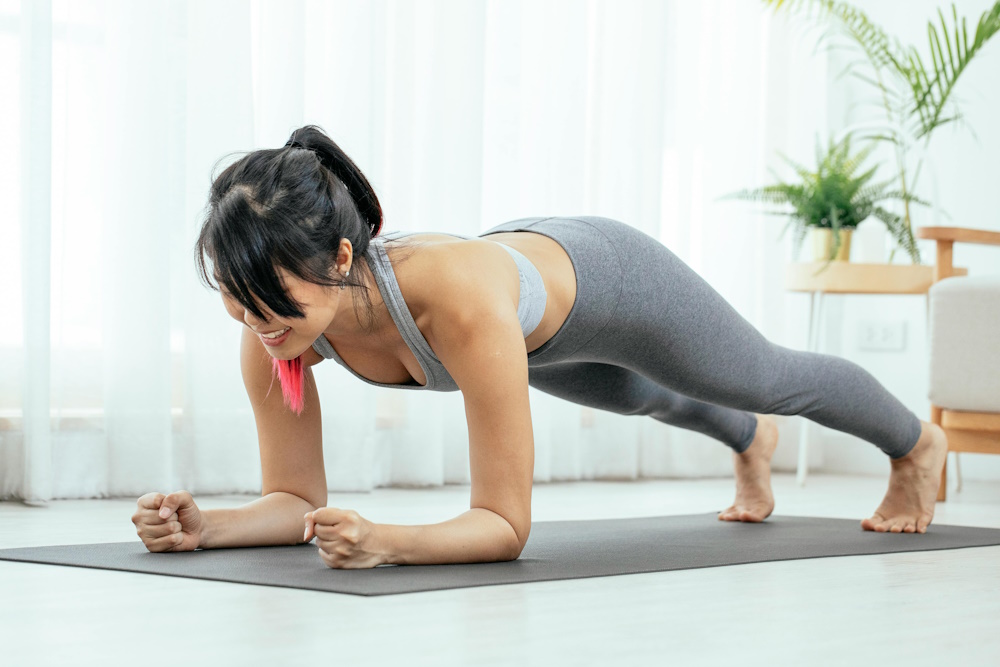Athletes constantly seek ways to enhance their performance, gain a competitive edge, and reduce the risk of injuries. Pilates, a low-impact exercise method focused on core strength, flexibility, and body awareness, has gained popularity among athletes for its potential to improve sports performance. In this comprehensive guide, we will delve into the world of Pilates workouts for athletes and sports performance, exploring the benefits, the best Pilates types, whether professional athletes incorporate Pilates into their training, and how often athletes should integrate Pilates into their routines.
Does Pilates improve athletic performance?
Yes, Pilates can significantly enhance athletic performance in various ways:
- Core Strength: Pilates targets the core muscles, including the abdominals, lower back, and pelvis. A strong core stabilizes the spine and pelvis, providing a solid foundation for dynamic movements in sports.
- Flexibility: Improved flexibility gained through Pilates can enhance an athlete’s range of motion, allowing for more efficient and fluid movements in their respective sports.
- Balance and Coordination: Pilates exercises promote body awareness, balance, and coordination, critical for precise movements and agility required in sports.
- Injury Prevention: Pilates helps correct muscle imbalances, which can reduce the risk of common sports-related injuries.
- Breath Control: Proper breathing techniques learned in Pilates can aid athletes in maintaining optimal oxygen intake and endurance during workouts or competitions.
- Mental Focus: Pilates encourages mindfulness and concentration, which can translate into improved focus and mental resilience in high-pressure athletic situations.
What type of Pilates is best for athletes?
The choice of Pilates type for athletes can depend on their specific sport and goals. Here are some popular Pilates styles that cater to different athletic needs:
- Mat Pilates: Mat Pilates focuses on exercises performed on the floor using just a mat. It’s an excellent choice for building core strength, flexibility, and body awareness, making it suitable for a wide range of athletes.
- Reformer Pilates: Reformer Pilates involves the use of a specialized machine that provides resistance through a system of springs and pulleys. It offers a more comprehensive workout, targeting specific muscle groups and providing adjustable resistance.
- Clinical Pilates: This variation is often prescribed by physical therapists to address specific injuries or rehabilitation needs. Athletes recovering from injuries can benefit from clinical Pilates tailored to their condition.
- Pilates for Sports-Specific Training: Some instructors specialize in sports-specific Pilates, customizing routines to mimic the movements and demands of a particular sport. This type of Pilates can be highly effective for athletes looking to improve their performance in their chosen discipline.
- Group Classes: Athletes can also benefit from group Pilates classes, which offer a social aspect along with expert instruction.
The best type of Pilates for athletes depends on their individual needs, fitness level, and sports objectives. Many athletes incorporate a combination of the above styles into their training regimens for a well-rounded approach.
Do professional athletes do Pilates?
Yes, many professional athletes across various sports incorporate Pilates into their training routines. Notable athletes, including NBA players, NFL stars, soccer players, and Olympic athletes, have endorsed Pilates for its ability to enhance their performance and reduce the risk of injuries.
Professional athletes turn to Pilates to:
- Improve core strength and stability.
- Enhance flexibility and range of motion.
- Correct muscle imbalances.
- Prevent overuse injuries.
- Boost mental focus and concentration.
The popularity of Pilates among professional athletes is a testament to its effectiveness as a supplementary training method.
How often should athletes do Pilates?
The frequency of Pilates workouts for athletes can vary based on individual needs, training schedules, and goals. Here are some general guidelines:
- Consistency: Consistency is key to reaping the benefits of Pilates. Athletes should aim for at least 2-3 Pilates sessions per week.
- Pre-Competition: Many athletes incorporate Pilates into their pre-competition routines for enhanced flexibility, core strength, and mental focus. In this case, sessions may be more frequent in the lead-up to an event.
- Off-Season: During the off-season, athletes may engage in more intensive Pilates training to address weaknesses, maintain fitness, and reduce the risk of injuries.
- Injury Rehabilitation: Athletes recovering from injuries may follow a prescribed Pilates program as part of their rehabilitation process. In such cases, the frequency and duration of sessions are determined by the athlete’s physical therapist or healthcare provider.
- Maintenance: Some athletes use Pilates as a year-round maintenance tool to support their overall fitness and athletic performance.
Ultimately, the frequency of Pilates sessions should align with an athlete’s training goals, and it’s advisable to work with a qualified Pilates instructor who can tailor the program to individual needs.
In summary, Pilates offers numerous benefits for athletes, including improved core strength, flexibility, balance, injury prevention, and mental focus. Athletes can choose from various Pilates types, including mat, reformer, clinical, and sports-specific Pilates, depending on their specific needs. Professional athletes often incorporate Pilates into their training regimens, and the frequency of Pilates workouts should be tailored to individual goals and training schedules. Consistency in Pilates practice can lead to enhanced athletic performance and overall well-being.
